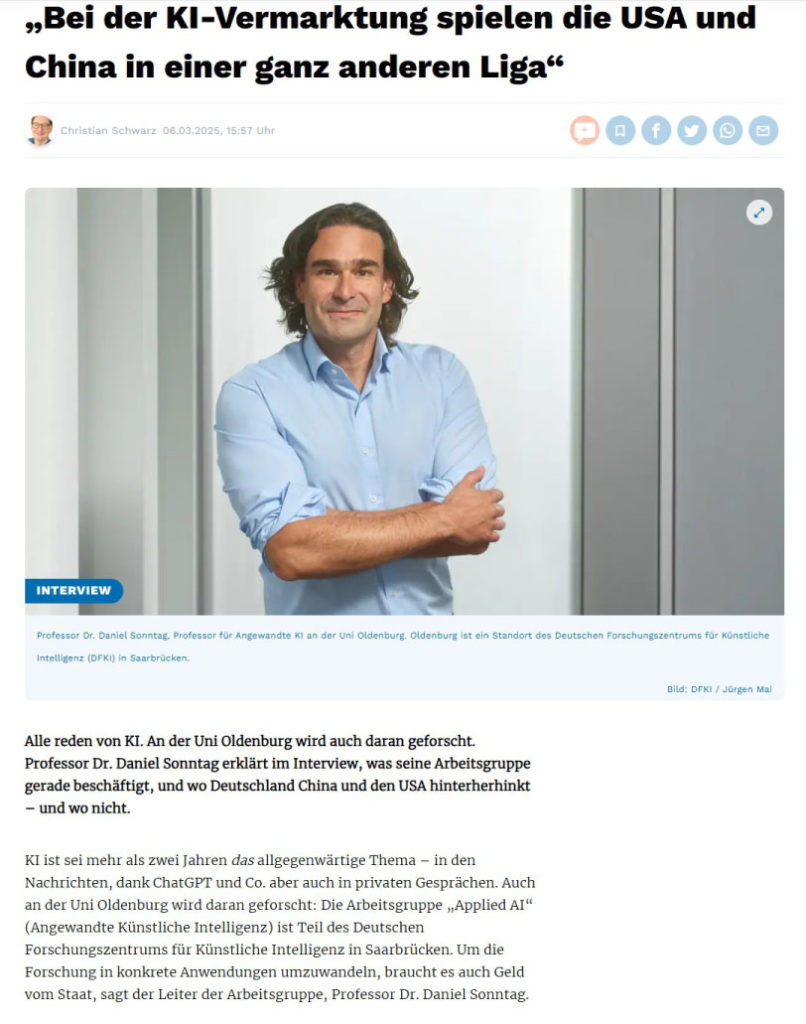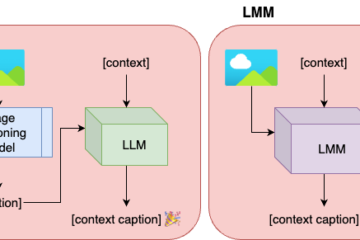The Lower Saxony press (Nordwest Zeitung/NWZ) and Oldenburg’s local Mox Journal published two interviews with Prof. Sonntag discussing generative and human-centered AI. As artificial intelligence becomes a widely discussed topic, the University of Oldenburg actively conducts research in this area. In these interviews, Prof. Sonntag elaborates on his research group’s current projects, as well as Germany’s comparative strengths and weaknesses in AI, particularly in relation to the United States and China. He emphasizes that, in terms of AI industry transfer, the US and China operate on a completely different level. The interviews are available in German:

MOX (English version)
Human-centred AI?
Human-centred AI, this means that through new technologies, human behavioural patterns can be observed, analysed, and processed, which in turn allows for the creation of assistance for humans. According to Daniel Sonntag, practical applications can particularly be found in medicine. Here, the aim is to familiarise a computer system with human behaviours so that, in the event of a problem, it can observe and analyse, ideally providing a potential solution. For instance, consider a dermatologist confronted with a skin condition that has various potential causes. This dermatologist now has the option of seeking a second opinion from other doctors or consulting an AI system, which has been developed with the involvement and expertise of multiple medical professionals and other participants. This does not rely on the knowledge of a single individual but on that of thousands.
Daniel Sonntag has long been fascinated by the interaction between computers and humans. This fascination led him to study computational linguistics, which included tasks such as feeding texts into computers and then having them answer questions about these texts—something that seems almost taken for granted in the age of language assistants. More than 20 years ago, however, this was a completely new field. Since 2007, he has been researching how such technology can be utilised in the medical field. His motivation lies in the fact that work in medicine tends to be less influenced by competitive thinking. “In industry, for example, there is often a stronger focus on commercial interests; this may also be the case in the medical field, but not to the same extent. However, I know that in medicine, I am working on a topic where it is directly clear that people are being helped and what the focus is: health,” he explains.
AI-based decision support systems of this kind are also gaining increasing popularity among doctors. In an overburdened healthcare system, where a significant portion of the extensive diagnostics is carried out in outpatient practices, any assistance is welcome. In his free time, Sonntag engages in physical activities and finds distraction from work through sports such as skiing. He also aims to connect these hobbies with his research. AI systems could also be used in the field of sports, whether to improve posture analysis during training, helping correct mistakes, or recognising dangerous situations in activities like skiing in a timely manner.
For this research to be successful, test subjects are needed who can help populate the AI application systems’ databases, enabling a broad coverage of scenarios. To facilitate this, the “Core IML” has been established on Heiligengeiststraße, a centre for interactive machine learning. It is a glass-walled space located in a public area frequented by a variety of people. The idea behind it is to spark public interest in this research and thereby design machine learning systems in a way that better aligns with end-users. Interested individuals can engage with these new technologies, experiment with them, and in doing so, contribute to creating content for publications, doctoral theses, and other academic works …
(see MOX)


